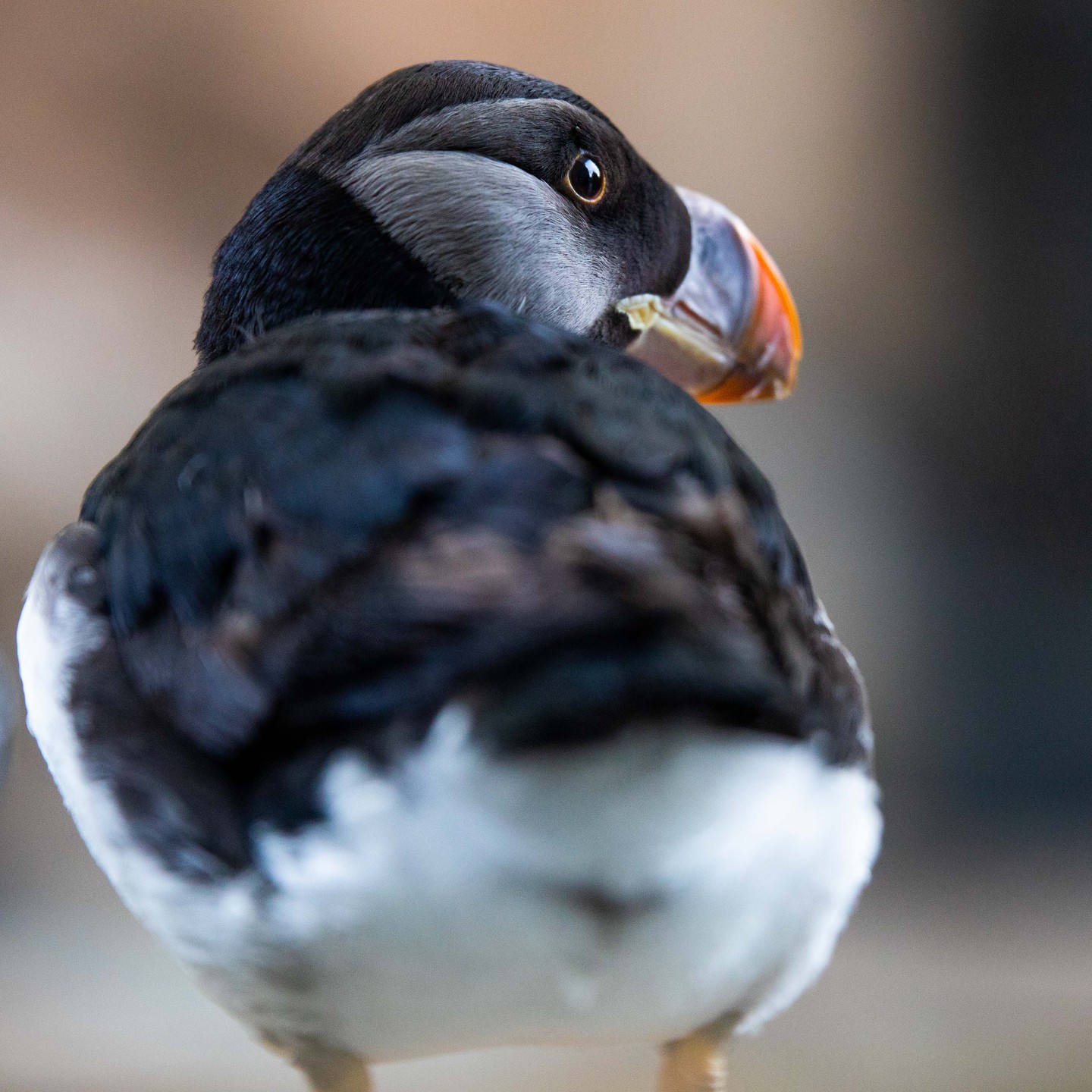– Introduction to Klay, a striking horned puffin recognized for her exceptional plumage during breeding and non-breeding seasons.
– Insights into the life cycle and molting process in puffins, emphasizing Klay’s unique retention of primary feathers.
– Examination of horned puffins as an indicator species for marine health and the significance of their conservation.
– The role of aviaries in wildlife conservation and education, with a spotlight on visitor engagement strategies.
– Practical steps individuals can take to contribute to the conservation of horned puffins and their habitats.
Meet Klay, a horned puffin known for her magnificent plumage, which sets her apart even in the non-breeding season. As we explore Klay’s world, we delve into the fascinating life cycles of horned puffins, their importance in marine ecosystems, the role of aviaries in conservation, and how everyone can be part of their preservation.
Klay exemplifies horned puffins, birds with distinct breeding and non-breeding plumages that captivate observers. During the breeding season, horned puffins sport a striking black back and a white belly, with a black mask across their eyes and their most distinctive feature – the fleshy, horn-like extension above them. Klay’s plumage, in particular, is noted for its vibrancy and the quality of her feathers, which remain impeccable even as she molts. In the non-breeding season, Klay, like her peers, adopts a less vibrant but equally fascinating darker plumage.
The horned puffin’s life cycle includes a fascinating molting process. Molting is when birds shed old feathers to make way for new growth. In puffins, this process is not only about replacing worn feathers but is crucial for their survival as it affects their insulation and ability to camouflage in their environments. Interestingly, Klay has retained her primary feathers longer than most, showcasing a unique pace in the molting process in her community.
Horned puffins play a pivotal role in their ecosystems, serving as an indicator of marine health. Their diet primarily consists of fish, and changes in their population can reflect the health of marine environments. The conservation of horned puffins is essential, not just for the birds themselves but for the broader health of marine ecosystems. Observing and supporting the health of species like Klay can provide critical data for environmental conservation efforts.
Aviaries are crucial in the conservation and education of wildlife like horned puffins. They offer a haven for at-risk species and serve as educational platforms for the public. Engaging visitors with stories of individual birds like Klay can significantly enhance public awareness and support for conservation efforts. Through educational programs, interactive experiences, and personal stories, aviaries can transform visitor perceptions and encourage active participation in conservation.
Individuals can contribute to the conservation of horned puffins in various ways. Supporting organizations dedicated to wildlife conservation, reducing plastic use to protect ocean habitats, and engaging in citizen science projects are practical steps everyone can take. Additionally, visiting aviaries and zoos focusing on conservation can provide financial and public support for these institutions’ valuable work.
Klay, the horned puffin, is a beautiful reminder of the intricacies of avian life cycles and the importance of each species to its habitat. Understanding the lives of animals like Klay can foster a deeper appreciation for wildlife and a stronger commitment to their conservation. As stewards of the planet, we must continue to support efforts that protect these remarkable birds and the ecosystems they inhabit.
*****
Source Description
It’s time for our Bird of the Week! Meet 🔸Klay🔸 the beautiful horned puffin!
Klay is known to be one of our prettiest horned puffins with the best non-breeding and breeding plumage.
She stands out with her outstanding feather quality, even in the dark plumage of the non-breeding season. Everyone in the aviary is currently molting, and most are already into the flightless molt stage, but Miss Klay still has her primary feathers. It’s take time to look this good!
The next time you’re in the aviary, see if you can identify our glamorous Klay!


